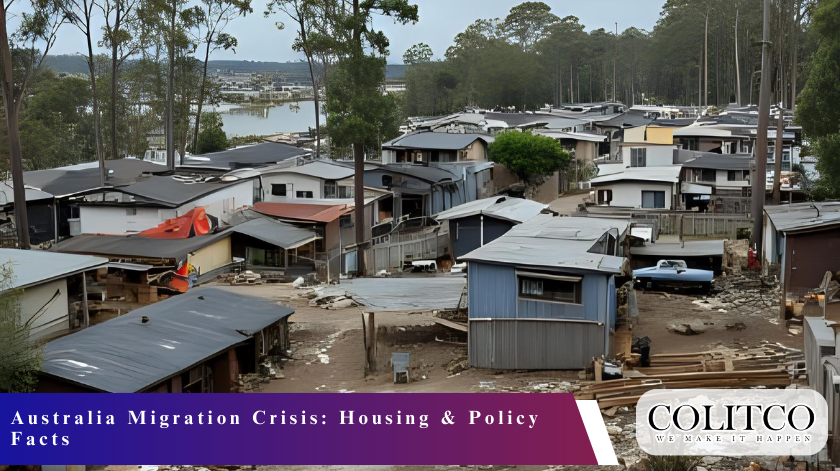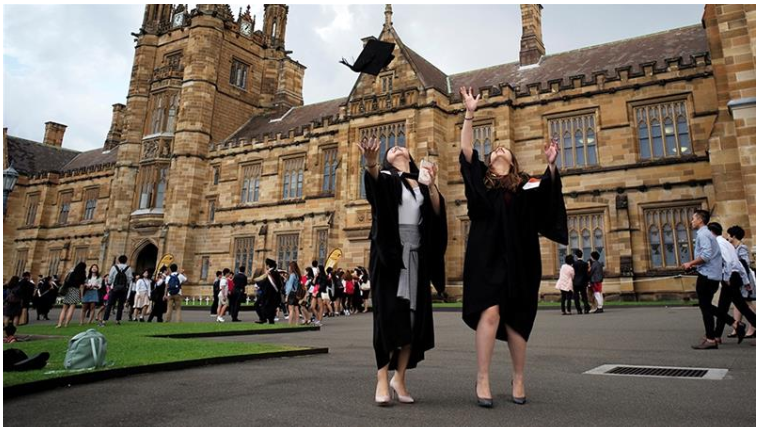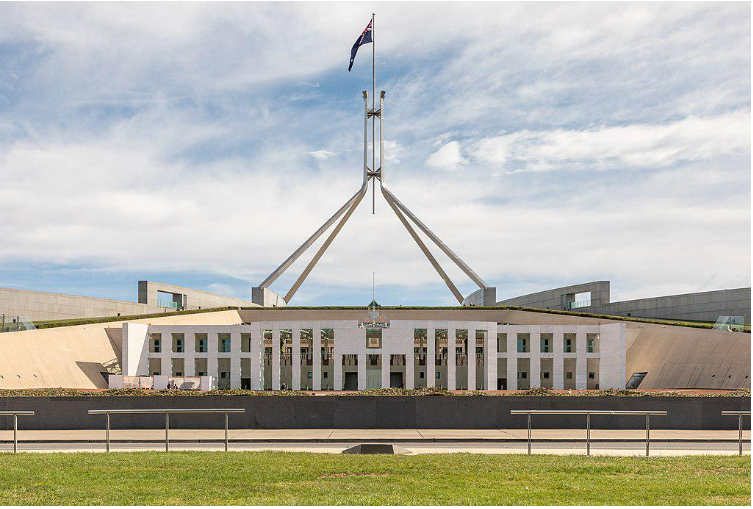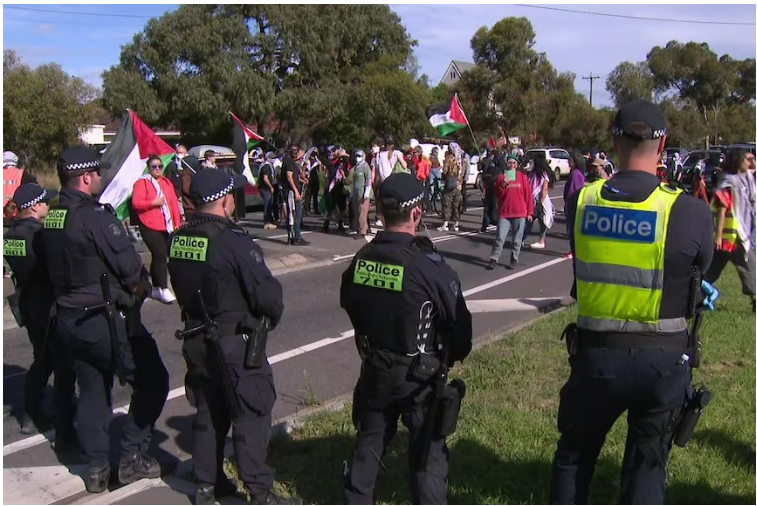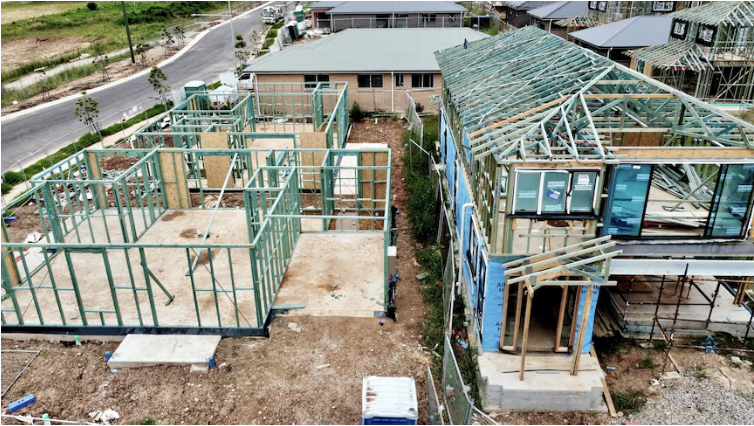Australia’s migration issue has reached national debate again as the country continues to struggle with record population growth, housing shortage, and political disputes over policy direction. Foreign migration growth has been described as one of the biggest issues of the last few decades.
Between 2000 and 2023, Australia’s population grew by 40 per cent, the largest growth rate of all developed nations. More than 30 per cent of the 2023 population was born overseas. Net overseas migration for the 2022–23 period was 536,000, declining marginally to 446,000 for the 2023–24 period.
Over 850,000 international students contribute significantly to net migration growth
This expansion has been spearheaded by overseas students, who number over 850,000 currently onshore
According to the Centre for Population’s 2024 Population Statement, Australia’s population is predicted to grow by 13.5 million in the next 40 years, reaching 41.2 million in 2065.
Housing Pressures
The issue of the affordability of housing has taken centre stage in the migration discourse. Sydney is the second least affordable housing market globally, behind Hong Kong. New South Wales recorded a net overseas migration of 120,073 by September 2023. During the same period, 29,505 residents left the state for other parts of Australia.
Economists further contend that immigration, together with constrained development, has compounded the shortage of housing. Australia constructs between 160,000 and 180,000 houses a year, a figure significantly short of the 250,000 needed to keep up with demand in years of maximum migration. Labour promises to construct 1.2 million houses by 2029, whereas the Coalition claims it will provide 500,000 houses sooner.
Regional Strain:
The Majority of the new migrants resettle in Sydney and Melbourne, where the pressures are best viewed. Since its establishment in the 1990s, Fairfield, a western Sydney suburb, has been the main location of settlement for humanitarian entrants is commonly referred to as the refugee capital in Australia.
There has been a call for more sustainable policies by local authorities, among them Mayor Frank Carbone, saying that the sudden influx has strained the housing and services.
Carbone emphasized that migration must remain regulated and balanced. He said, “What we’ve had over the past few years with more than one million people coming in has had a huge impact on the quality of life for every Australian.”
Political Responses:
Government debates focus on cutting migration while boosting housing supply.
Both governments have pledged to reduce the number of arrivals in this nation. Labour is estimating net overseas migration over the current financial year of 335,000 and a long-term target of 230,000 per annum. The Coalition promised to reduce intake to 160,000 immediately.
Ex-Immigration Department deputy secretary Dr Abul Rizzi broke down that migration and housing projections must be balanced. Based on him, if migration and housing targets are met, Australia can experience a housing surplus. However, AMP’s chief economist Shane Oliver opined that cutting back on migration while boosting building is needed in order to prop up the housing crisis.
Rising Tensions:
Public rallies highlight tensions around migration and national identity
Social and political tensions have also been heightened by the row. Extreme right groups, which initiated anti-immigration protests under the auspices of a program termed as March for Australia, have been criticized by the government authorities as being divisive and destructive. The federal government reinforced the view that multiculturalism is the source of national identity and repudiated efforts at coercing migrant communities.
Victoria Police declared Melbourne’s central business district a declared area in the run-up to the rally, granting police increased powers of search due to fears of violence. The same security preparations are being made in Sydney, Brisbane, and Perth.
Final Thoughts:
Balancing migration and housing supply remains Australia’s key long-term challenge.
Migration policy will remain at the centre of Australia’s economic and social planning. Population growth versus housing supply will have implications for national budgets, the real estate market, and infrastructure planning.
Any diminution of migration would likely have an impact on those industries dependent on international students and skilled migrants. On the other hand, high migration levels with inadequate housing will continue to keep affordability pressures high.
Frequently Asked Questions (FAQs)
- What is Australia’s current migration level?
Net overseas migration was 446,000 in 2023–24, after peaking at 536,000 in 2022–23. - Why is migration considered a problem in Australia?
It has worsened housing shortages, strained infrastructure, and fueled political debate. - How does migration affect housing affordability?
High demand from new arrivals increases pressure on an already limited housing supply, raising rents and property prices. - Which cities are most affected by migration?
Sydney and Melbourne receive the majority of new migrants, intensifying local housing and infrastructure challenges. - What role do international students play in migration numbers?
They are a major driver, with over 850,000 students in Australia contributing to net migration growth. - How has the government responded?
Labor aims to reduce migration to 230,000 annually, while the Coalition has pledged deeper cuts to 160,000. - Does migration benefit Australia?
Yes, migrants fill labor shortages, support the education sector, and add cultural diversity, despite the challenges. - How do Australians view migration?
Opinions are divided—some welcome economic benefits, while others are concerned about housing and job competition. - What is the long-term population forecast?
Australia’s population is projected to grow to 41.2 million by 2065. - Could reducing migration solve the housing crisis?
Experts argue it may help, but increasing housing construction is equally necessary to balance demand and supply.

